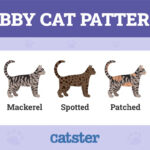My Neighbor Totoro, a beloved animated film by Studio Ghibli and Hayao Miyazaki, has enchanted audiences worldwide with its heartwarming story and imaginative characters. Among these iconic figures, the Totoro Catbus stands out as a truly unique and whimsical creation. But what exactly is a Catbus? And what makes it such a memorable part of the Totoro universe? Let’s delve into the enchanting details of this feline transportation marvel.
What is a Totoro Catbus?
Simply put, the Totoro Catbus is a bus that resembles a cat, or perhaps a cat that has transformed into a bus. This delightful character perfectly embodies the magical realism that defines Miyazaki’s storytelling. The Catbus isn’t just any ordinary vehicle; it’s a creature deeply rooted in Japanese folklore and Miyazaki’s boundless imagination. He is not based on traditional Japanese mythology but is a product of Miyazaki’s creative genius, drawing inspiration from various animalistic traits.
Origins and Inspirations of the Catbus
Miyazaki describes Totoro as a blend of different animals: the raccoon-like tanuki, domestic cats (evident in the pointed ears and expressive face), and owls (note the chevron patterns on his chest and the “ooo-ing” sounds he makes with his ocarina at night). Similarly, the Totoro Catbus seems to be inspired by the mystical Bake Neko from Japanese folklore.
In Japanese legends, it’s believed that cats, upon reaching a certain age, gain magical shape-shifting abilities. These magical cats are known as “Bake Neko,” a concept that also playfully appears as Moon’s nickname in another Ghibli film, “Whisper of the Heart” (Mimi wo Sumaseba). The Totoro Catbus embodies this Bake Neko spirit, envisioned as a feline who, intrigued by the concept of a bus, magically transforms itself into one.
Some fans also speculate on a possible influence from the Cheshire Cat in Lewis Carroll’s “Alice in Wonderland,” particularly given the similarities between Mei’s adventure of falling into a tree hole after the Chibi-Totoro and Alice’s fall down the rabbit hole. Whether directly inspired or not, the Totoro Catbus shares that same sense of whimsical fantasy and unexpected magic.
The Catbus in My Neighbor Totoro
The Totoro Catbus plays a pivotal role in the film, acting as a fantastical mode of transport for Satsuki and Mei. Its first appearance is incredibly memorable, materializing at a bus stop on a rainy night.
The destination sign on the Totoro Catbus is also quite telling. Initially, it displays “Tsukamori,” the name of the forest where Totoro resides, reinforcing the Catbus’s connection to the forest spirit and the magical realm. Later, when Satsuki desperately needs to find Mei, the Catbus appears again, changing its destination sign through various locations like “Nagasawa” and “Ushinuma” before finally settling on “Mei,” showcasing its sentient and helpful nature. In the film’s climax, the sign changes to “Shichikokuyama Hospital,” indicating its ability to travel to the human world and assist in urgent situations, taking Satsuki and Mei to their mother’s hospital. Interestingly, the film playfully notes the Catbus’s imperfect grasp of kanji, with the kanji for “in” appearing upside down on the hospital sign, adding a touch of endearing imperfection to its magical abilities.
More Than One Totoro? And a Catbus Full?
While the film primarily focuses on the iconic grey, large Totoro (Oh-Totoro), it’s mentioned that there are other Totoros: Chuu-Totoro (medium, blue) and Chibi-Totoro (small, white). Extending this delightful concept, some of Miyazaki’s watercolor paintings depict an even more whimsical scene: a Catbus overflowing with numerous Totoros, all heading to the bus stop where Satsuki and Mei are waiting for their father. This imagery expands the enchanting world of Totoro, suggesting a whole community of these forest spirits and their feline transportation.
The Enduring Appeal of the Totoro Catbus
The Totoro Catbus has become an enduring symbol of My Neighbor Totoro and Studio Ghibli’s imaginative storytelling. Its unique design, blending feline and vehicular elements, coupled with its magical and helpful nature, has captured the hearts of audiences of all ages. It represents the film’s themes of childhood wonder, the magic of nature, and the comforting presence of fantastical creatures in our world.
The popularity of the Totoro Catbus extends beyond the film itself. It’s a frequently featured character in merchandise, from plush toys to figurines, and is a major attraction at the Ghibli Museum in Mitaka, Tokyo, where visitors can even climb aboard a life-sized Catbus replica. This enduring appeal proves the lasting impact of the Totoro Catbus as a symbol of joy, imagination, and the magic found within Miyazaki’s animated masterpiece.
In Conclusion
The Totoro Catbus is more than just a mode of transportation in My Neighbor Totoro; it’s a representation of the film’s whimsical spirit and the boundless creativity of Hayao Miyazaki. This magical feline bus continues to fascinate and delight audiences worldwide, solidifying its place as one of the most beloved and iconic characters in animation history. Exploring the Totoro Catbus allows us to appreciate the depth and charm of Miyazaki’s world, where imagination takes flight and even a cat can become a bus to adventure.

